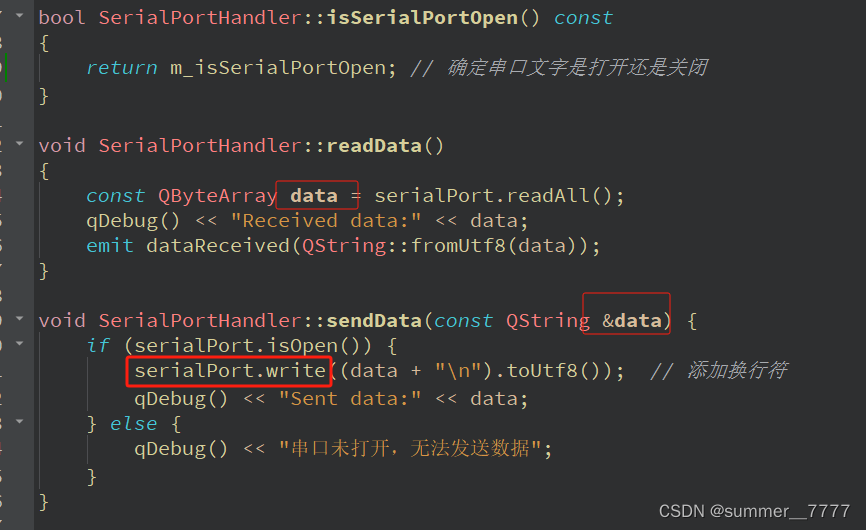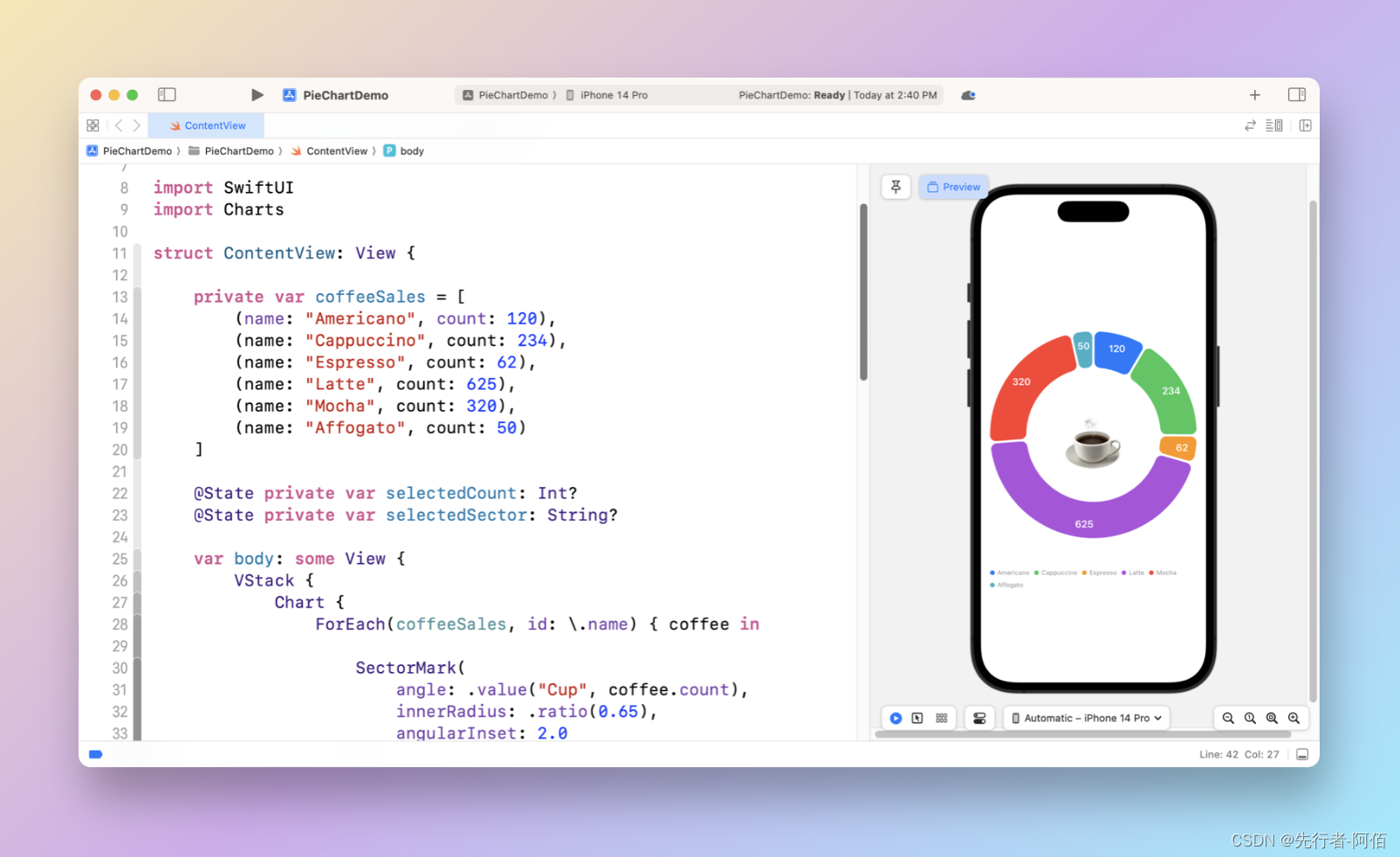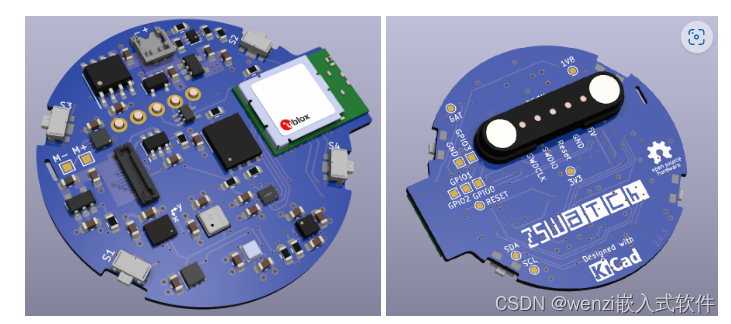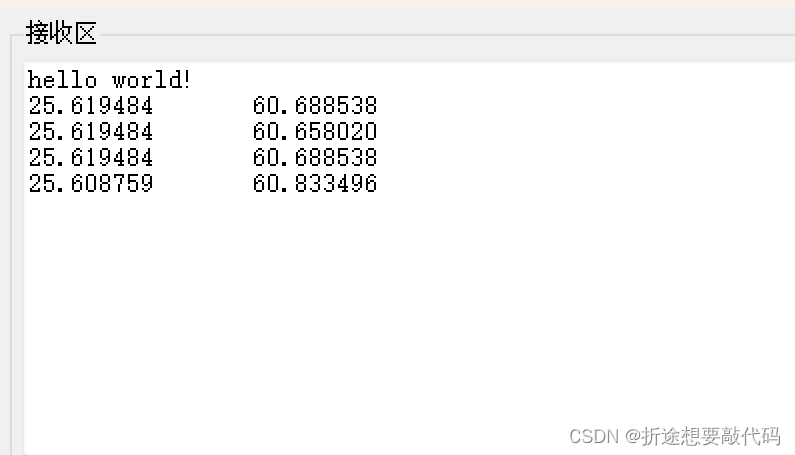目录
1、priority_queue的使用
2、实现没有仿函数的优先级队列
3、实现有仿函数的优先级队列
3.1 仿函数
3.2 真正的优先级队列
1、priority_queue的使用

priority_queue是优先级队列,是一个容器适配器,不满足先进先出的特点,而是优先级高的先出,默认的适配器是vector,底层是一个堆,默认是大堆
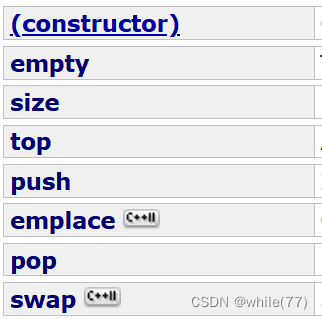

priority_queue是可以进行迭代器区间初始化的
void test_priority_queue1()
{
vector<int> v = { 3,2,7,6,0,4,1,9,8,5 };
priority_queue<int> q1;
for (auto& e : v)
q1.push(e);
while (!q1.empty())
{
cout << q1.top() << " ";
q1.pop();
}
cout << endl;
}void test_priority_queue2()
{
vector<int> v = { 3,2,7,6,0,4,1,9,8,5 };
priority_queue<int> q1(v.begin(), v.end());
while (!q1.empty())
{
cout << q1.top() << " ";
q1.pop();
}
cout << endl;
}可以用数组直接初始化
void test_priority_queue3()
{
int v[10] = {3,2,7,6,0,4,1,9,8,5};
priority_queue<int> q1(v, v + 10);
while (!q1.empty())
{
cout << q1.top() << " ";
q1.pop();
}
cout << endl;
}上面3段代码的结果都是相同的,都是9 8 7 6 5 4 3 2 1 0,因为默认是建大堆
2、实现没有仿函数的优先级队列
namespace cxf
{
template<class T,class Container = std::vector<T>>
class priority_queue
{
public:// 建大堆
void adjust_up(int child)
{
int parent = (child - 1) / 2;
while (child > 0)
{
if (_con[parent] < _con[child])
{
std::swap(_con[parent], _con[child]);
child = parent;
parent = (child - 1) / 2;
}
else break;
}
}
void adjust_down(int parent)
{
int child = parent * 2 + 1;
while (child < _con.size())
{
if (child + 1 < _con.size() && _con[child] < _con[child + 1])
{
++child;
}
if (_con[parent] < _con[child])
{
std::swap(_con[parent], _con[child]);
parent = child;
child = parent * 2 + 1;
}
else break;
}
}
// 强制编译器生成默认的构造函数,因为下面有迭代器区间初始化,这样没办法用默认构造函数
priority_queue() = default;
// 迭代器区间初始化
template<class InputIterator>
priority_queue(InputIterator first, InputIterator last)
{
while (first != last)
{
_con.push_back(*first);
++first;
}
// 建堆
for (int i = (_con.size() - 1 - 1) / 2; i >= 0; i--)
{
adjust_down(i);
}
}
void push(const T& x)
{
_con.push_back(x);
adjust_up(_con.size() - 1);
}
void pop()
{
std::swap(_con[0], _con[_con.size() - 1]);
_con.pop_back();
adjust_down(0);
}
const T& top()
{
return _con[0];
}
size_t size()
{
return _con.size();
}
bool empty()
{
return _con.empty();
}
private:
Container _con;
};
}上面是建大堆的优先级队列,当要建小堆时,需要在adjust_up和adjust_up中将<改成>,这样是十分麻烦的,为例能够在不修改代码的情况下完成建小堆,所以引入了仿函数的概念
3、实现有仿函数的优先级队列
3.1 仿函数
仿函数就是重载了operatror()的类,类的对象可以像调用函数一样使用
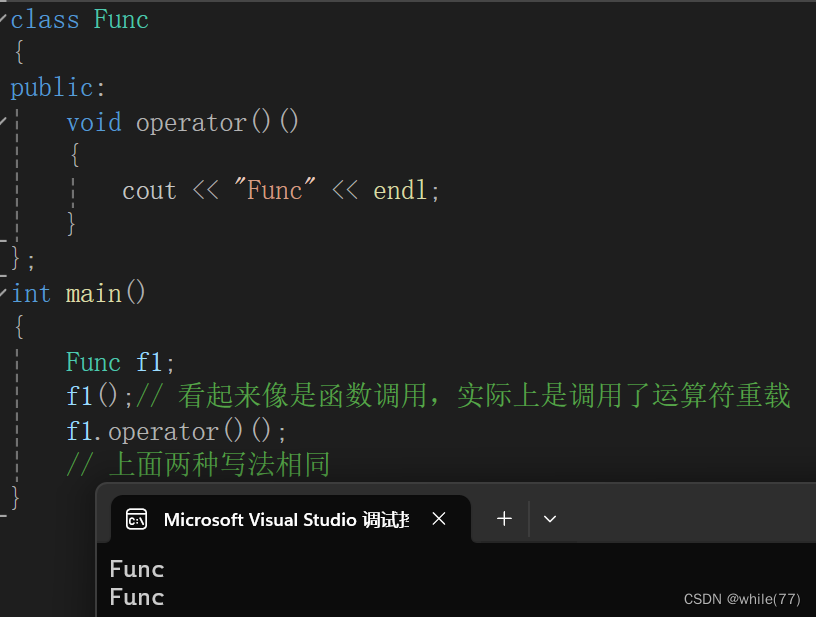
operator()的特点是参数个数和返回值个数可以根据需求来定,很灵活,所以有很多用法
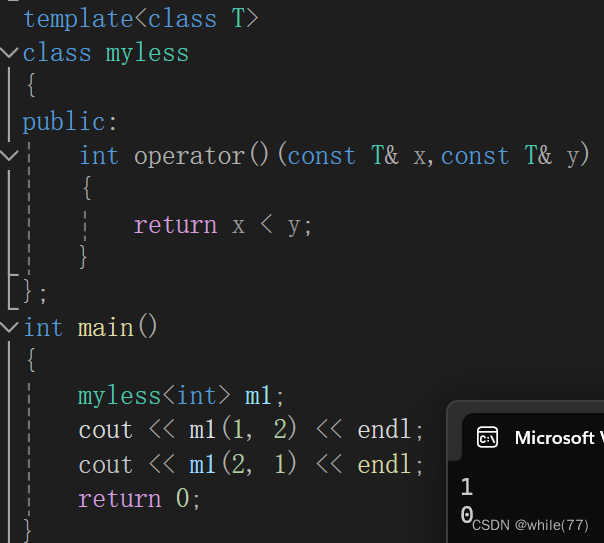
若用class来定义仿函数的类要加public,所以通常会用struct来定义仿函数
根据仿函数就可以来实现一个既可建大堆,又可建小堆的优先级队列
3.2 真正的优先级队列
namespace cxf
{
template<class T>
class myless // 小于是大堆
{
public:
bool operator()(const T& x, const T& y)
{
return x < y;
}
};
template<class T>
class mygreater // 大于是小堆
{
public:
bool operator()(const T& x, const T& y)
{
return x > y;
}
};
template<class T, class Container = std::vector<T>, class Comapre = myless<T>>
class priority_queue
{
public:
void adjust_up(int child)
{
Comapre comfunc;
int parent = (child - 1) / 2;
while (child > 0)
{
//if (_con[parent] < _con[child])
if(comfunc(_con[parent],_con[child]))
{
std::swap(_con[parent], _con[child]);
child = parent;
parent = (child - 1) / 2;
}
else break;
}
}
void adjust_down(int parent)
{
Comapre comfunc;
int child = parent * 2 + 1;
while (child < _con.size())
{
/*if (child + 1 < _con.size() && _con[child] < _con[child + 1])*/
if (child + 1 < _con.size() && comfunc(_con[child], _con[child + 1]))
{
++child;
}
//if (_con[parent] < _con[child])
if(comfunc(_con[parent],_con[child]))
{
std::swap(_con[parent], _con[child]);
parent = child;
child = parent * 2 + 1;
}
else break;
}
}
// 强制编译器生成默认的构造函数,因为下面有迭代器区间初始化,这样没办法用默认构造函数
priority_queue() = default;
// 迭代器区间初始化
template<class InputIterator>
priority_queue(InputIterator first, InputIterator last)
{
while (first != last)
{
_con.push_back(*first);
++first;
}
// 建堆
for (int i = (_con.size() - 1 - 1) / 2; i >= 0; i--)
{
adjust_down(i);
}
}
void push(const T& x)
{
_con.push_back(x);
adjust_up(_con.size() - 1);
}
void pop()
{
std::swap(_con[0], _con[_con.size() - 1]);
_con.pop_back();
adjust_down(0);
}
const T& top()
{
return _con[0];
}
size_t size()
{
return _con.size();
}
bool empty()
{
return _con.empty();
}
private:
Container _con;
};
}priority_queue的第三个模板参数就是仿函数
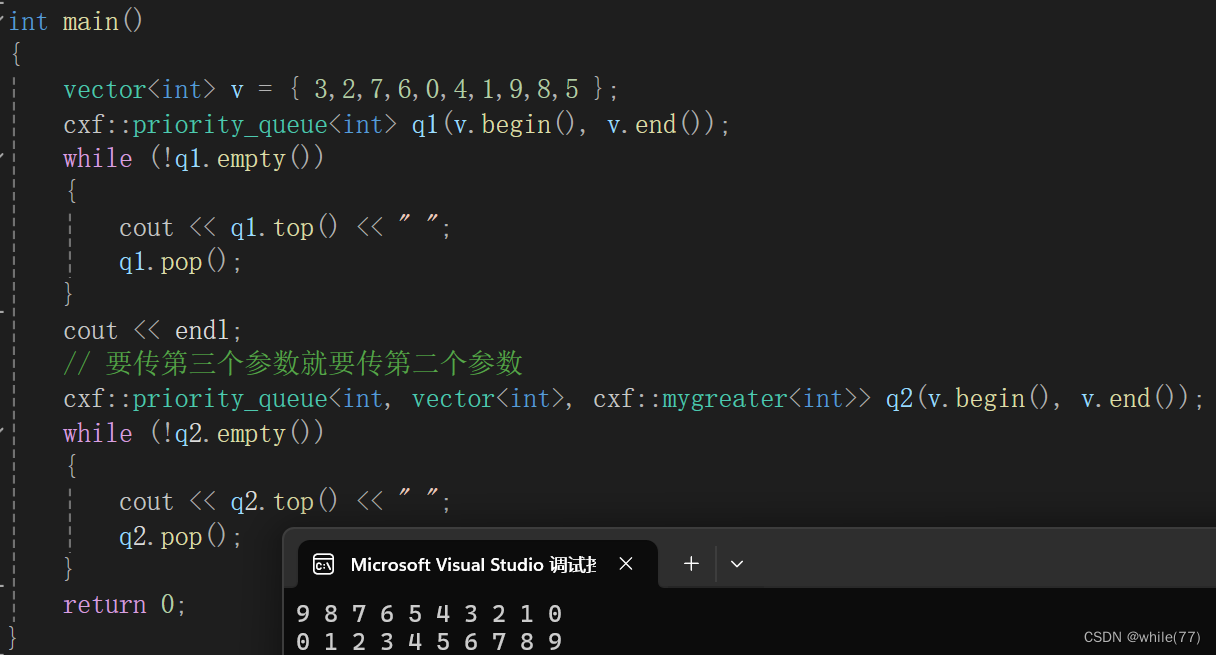
在STL库中的priority_queue来建小堆












